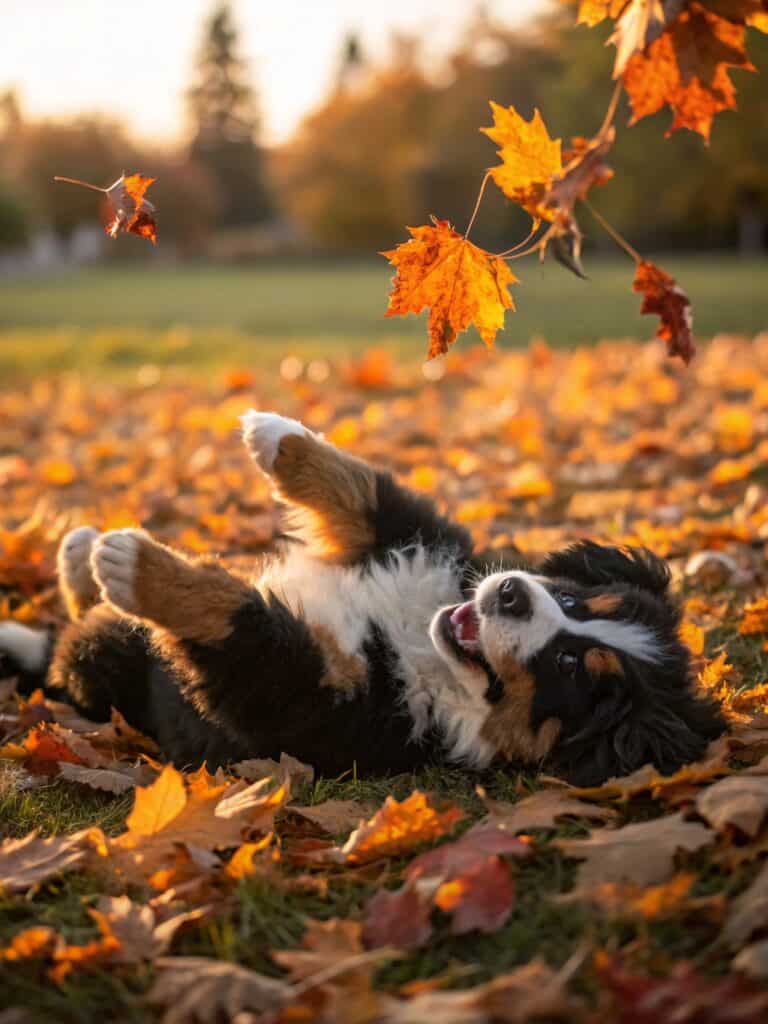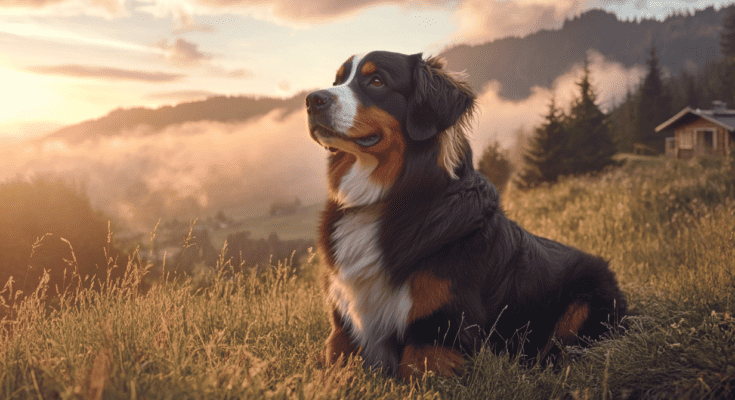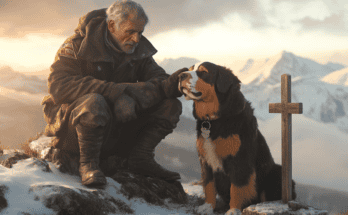Mountain dogs are strong, intelligent, and loyal companions that thrive in an active environment. Whether you own a Bernese Mountain Dog, a Great Pyrenees, or an Anatolian Shepherd, maintaining a consistent daily routine is essential for their overall well-being. This guide will help you create a structured routine that promotes a healthy lifestyle, proper training, and mental stimulation for your mountain dog.

Morning Routine: A Fresh Start to the Day
1. Morning Walk (30-45 min)
A brisk morning walk or light hike is the perfect way to start your dog’s day. Mountain dogs have high energy levels and require regular exercise to maintain their health and happiness.
- Benefits: Helps burn off energy, improves digestion, and prevents boredom.
- Best Locations: Trails, open fields, or a quiet neighborhood.
- Training Tip: Use this time to reinforce leash manners and commands like “heel” and “stay.”
2. Feeding Time: A Balanced Breakfast
- Feed your dog a high-protein, balanced meal to fuel their morning activities.
- Choose high-quality kibble, raw diet, or home-cooked meals that include essential nutrients.
- Fresh water should always be available to keep your dog hydrated.
3. Basic Training Session (10-15 min)
Training in the morning is ideal because your dog is alert and focused.
- Reinforce basic commands like sit, stay, come, and leave it.
- Introduce new tricks or obedience challenges to keep their mind engaged.
- Use positive reinforcement with treats and praise.
Watch youtube below:
Midday Routine: Mental Stimulation & Relaxation
4. Rest & Recovery (12:00 PM – 2:00 PM)
After an active morning, your mountain dog needs a break to relax and recharge.
- Provide a quiet, comfortable space indoors or a shaded area outdoors.
- Keep them occupied with chew toys, puzzle feeders, or calming music.
5. Socialization & Playtime (2:00 PM – 3:00 PM)
Mountain dogs are social and thrive on interaction with their family and other pets.
- Arrange playdates with other dogs or interactive games like fetch and tug-of-war.
- If possible, visit a dog park or allow supervised free play in a fenced yard.
- Practice calm interactions with strangers to improve socialization skills.
6. Grooming Check (5-10 min)
Regular grooming prevents matting and keeps their coat healthy.
- Brush their coat to remove loose hair and debris.
- Check ears for dirt or infections (especially for floppy-eared breeds).
- Inspect paws for cracks or embedded debris after outdoor activities.
Afternoon Routine: Keeping Energy Levels Balanced
7. Short Walk (15-20 min)
A short afternoon walk helps maintain a consistent exercise routine without overexertion.
- Keeps your dog’s joints flexible and prevents stiffness.
- Offers a mental reset, especially if they’ve been indoors.
- Provides an opportunity for a potty break and light stretching.
8. Hydration & Nutritional Snacks
- Offer fresh water after walks.
- Provide healthy treats like carrots, apples, or frozen yogurt cubes.
- Avoid overfeeding to prevent weight gain, especially in large breeds prone to joint issues.
Evening Routine: Unwinding & Bonding Time
9. Dinner & Digestion (6:00 PM – 7:00 PM)
- Feed your dog a nutrient-rich meal with high-quality protein, fats, and fiber.
- Allow at least 30 minutes of rest after eating before engaging in physical activities.
- Monitor portion sizes to maintain a healthy weight and avoid obesity.
10. Training Reinforcement & Mental Challenges
- Work on advanced obedience like off-leash commands and impulse control.
- Provide puzzle toys or scent work games for mental stimulation.
- Teach fun tricks like “shake,” “roll over,” or “fetch a specific toy.”
11. Light Grooming & Health Check (5-10 min)
Before bedtime, take a few minutes to check your dog’s overall well-being.
- Brush their coat to remove tangles and loose fur.
- Check paws, eyes, and ears for any abnormalities.
- Massage joints gently, especially for older dogs prone to arthritis.
12. Quiet Time & Sleep Preparation
- Provide a comfortable dog bed in a calm, quiet area.
- Establish a bedtime routine with gentle petting or calming scents.
- Keep a consistent sleep schedule to support their overall health.
Special Considerations for Mountain Dogs
1. Seasonal Care
- Winter: Protect paws from ice and snow with paw wax or boots.
- Summer: Avoid midday walks to prevent overheating and offer plenty of shade and water.
- Rainy Days: Use waterproof jackets and dry them thoroughly after walks.
2. Common Health Concerns & Prevention
Mountain dogs are prone to hip dysplasia, bloat, and joint issues.
- Maintain a healthy diet with joint supplements like glucosamine.
- Prevent bloat by avoiding exercise immediately after meals.
- Schedule regular vet check-ups to monitor their overall health.
3. Traveling & Outdoor Adventures
- Ensure your dog is comfortable with car rides before long trips.
- Use a dog-friendly hiking harness for outdoor adventures.
- Carry portable water bowls and first-aid kits for emergencies.
The Benefits of a Daily Routine
A structured daily routine helps your mountain dog: ✔️ Maintain a healthy weight and prevent obesity-related illnesses.
✔️ Reduce anxiety and behavioral issues by creating a predictable schedule.
✔️ Strengthen the bond between you and your dog through consistent training.
✔️ Improve social skills and adaptability in different environments.
By following this comprehensive daily routine, you can ensure that your mountain dog stays happy, healthy, and well-balanced throughout their life.


